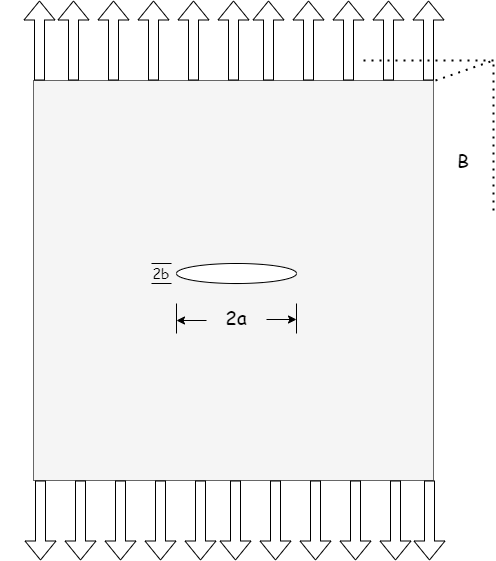Griffith’s Energy Balance#
We will now follow Griffith and try to analyze the external stresses required to fracture a plate with an elliptical crack.

We can write the potential energy on the plate as :
Where \(U_0\) is the elastic energy in the uncracked plate and utilizing Inglis’s solution for an elliptical crack :
Crack growth will take place only if \(\frac{dU}{d a}\) will indicate that an increase in \(a\) is energetically favorable. Looking at \(\frac{d U}{d a}=0\) we can thus identify the critical crack length for a given magnitude of remote loading:
rearranging and isolating \(\sigma_{\inf}\) we arrive at
Note that the Griffith fracture criteria is completely ignorant of the radius at the ellipse tip.
Some small modofications#
A revised expression of Griffith’s criteria can be written by replacing the surface energy \(\gamma_s\) with a more general term - \(w_f\) the fracture energy.
\(w_f\) can be used to account for the presence of plasticity:
Or to account for crack tortuosity : $\( w_f = \gamma_s * \left ( \frac{A_{true}}{A_{projected}} \right) \)$
